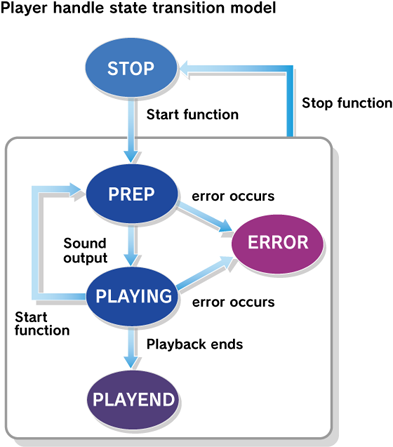 |
CRI ADX
Last Updated: 2025-05-07 13:34 p
|
 |
CRI ADX
Last Updated: 2025-05-07 13:34 p
|
| Playback Method | Description | Data Setting Function |
|---|---|---|
| Cue Payback | Plays back Cues in an ACB file | criAtomExPlayer_SetCueName criAtomExPlayer_SetCueId |
| AWB Playback | Plays back audio data packed in an AWB file | criAtomExPlayer_SetWaveId |
| On-Memory Playback | Plays back audio data loaded on the memory | criAtomExPlayer_SetData |
| File Playback | Plays back audio files | criAtomExPlayer_SetFile |
| Status Value | Player Status |
|---|---|
| CRIATOMEXPLAYER_STATUS_STOP | The player has been stopped. No audio data is being played back. |
| CRIATOMEXPLAYER_STATUS_PREP | The player is preparing for playback. An audio data is being read, but the playback of voices has not been started. |
| CRIATOMEXPLAYER_STATUS_PLAYING | The player is playing back audio data. While reading audio data, the player is playing back the data. |
| CRIATOMEXPLAYER_STATUS_PLAYEND | The player has completed playback. The player has played back to the end of the audio data that was set. |
| CRIATOMEXPLAYER_STATUS_ERROR | The player has failed to play back audio data. A problem such as a read error has occurred. |
